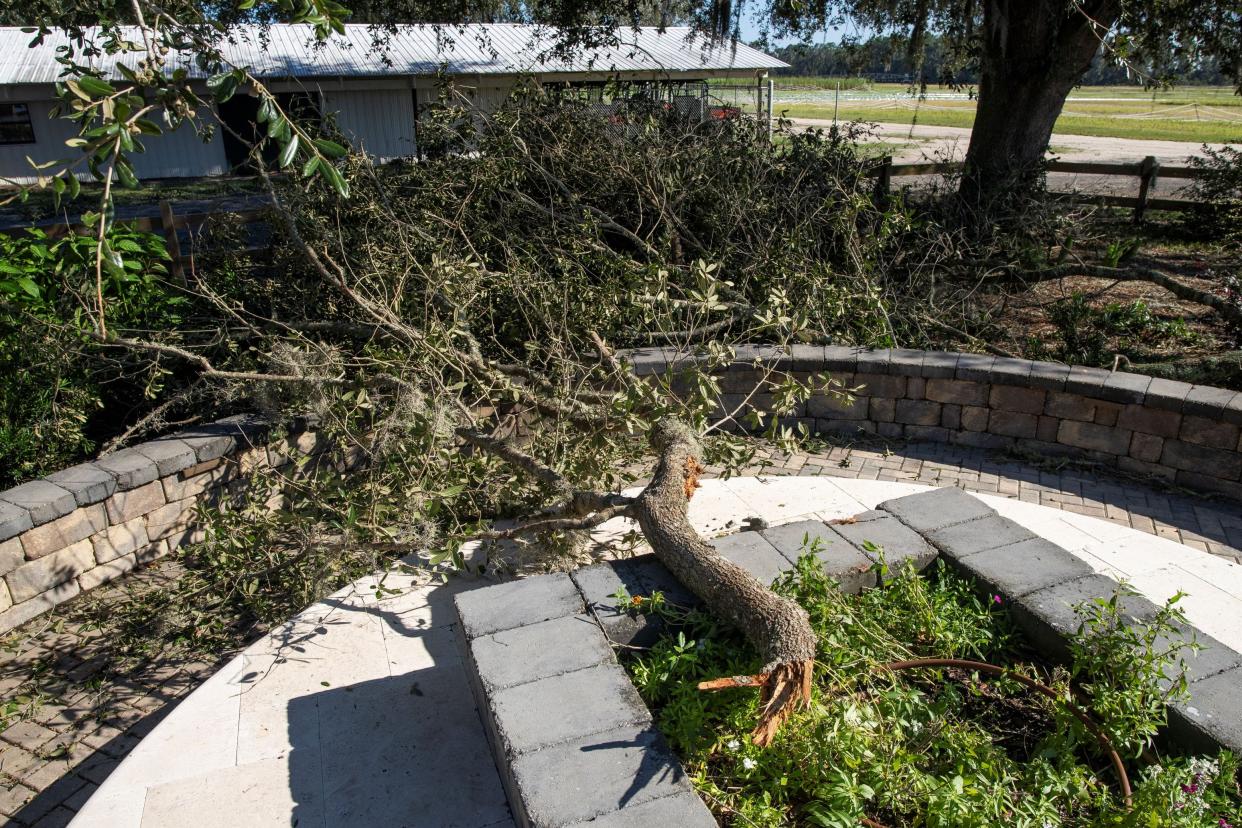Storm prep and other things to do in your Jacksonville yard this June

It doesn’t seem possible to me, but June is already here for 2024. Personally, this means a lot for me because the start of summer results in a lot of work in the garden as I have to start mowing more frequently, keep checking on plants as the heat picks up and, most importantly, make sure my landscape is ready for hurricane season. Here are some tips to help you in your garden in June:
Be storm ready
June 1 is the official start of the Atlantic tropical storm season and, if you follow the news, you know that they are predicting this to be a busy year with high water temperatures. While we hope we do not see any major impacts in our area throughout the storm season, it is best to be prepared and part of that is reducing hazards in your garden. You do not want to be the person calling your local Extension office the day before a storm wondering what you should do to keep your home safe or panicking to find someone who will haul away all of the garden debris you just cut away.
First, take a walk around your home and look for potential hazards. Do you have any dead branches in your trees? Could anything become airborne in high winds? Are there spots that flood and could threaten your home? Answering these questions and others can help you start to make decisions.
If you notice any issues with your trees, contact an ISA-certified arborist to advise on what pruning should be done or if a removal is warranted. You can find one in your area at treesaregood.org/findanarborist/. Pre-storm pruning should happen as soon as possible to reduce risks and you should never do it right before a storm is coming. The higher winds make it risky and those cut branches you put out for collection may not be hauled off in time, making them airborne hazards or barriers to traffic and emergency operations. Never place any landscape debris over storm drains as well, as this can lead to flooding.
However, do not prune back your palms heavily. The common “hurricane cut” where most fronds are cut off actually harms the tree and may make them more likely to snap in storms. Only prune palm fronds when they are completely brown and hanging downwards on the tree. Also, make sure that anything in your landscape that could blow around or float away in severe weather is secured or can be easily moved and secured before the storm arrives. You should also take time to clean your gutters and downspouts and make sure no areas are going to direct water back toward your home.
All of this advice extends beyond hurricane season as well, since we can see severe weather at any time in Florida, including tornados and high winds from our regular storms.
Know how to mow
Aside from storms, my least favorite part of gardening in Florida in the summer is mowing my yard. I don’t mind it when I can get away with once every two to three weeks but I feel like once June hits, it becomes an every Saturday morning ritual to get out my push mower and spend the next three hours in my yard. However, you can make this job less stressful on yourself and your yard by following some simple rules.
First, do not overfertilize or irrigate your yard. More fertilizer and more water often leads to more grass growth and more mowing. They can also lead to more plant stress and disease issues. Only irrigate when needed and you should only fertilize most lawns 1-3 times a year. Next, mow at the correct height. If you have Saint Augustinegrass, this means cutting at a height of 3-4 inches for standard varieties or 2.5-3.5 inches for dwarf varieties. For me, this means putting my mower at its highest setting. Cutting taller helps with plant health and its ability to survive summer stresses, pests and diseases. Finally, take care of your equipment. Keeping your mower blades sharp decreases tearing of grass blades and will lead to better plant health. You should also clean under your mower deck after mowing, especially if you are moving between yards as you could spread turf diseases on your equipment.
What to plant in June
Vegetables: Okra, Southern peas (black-eyed, Crowder, etc.), sweet potatoes, boniato, gingers, roselle, tropical spinach, amaranth, calabaza, long squash, luffa, papaya, passionfruit, pigeon pea, Seminole pumpkin and chayote.
Annuals: Celosia, coleus, crossandra, exacum, impatiens, nicotiana, ornamental pepper, portulaca, salvia, torenia, periwinkle and zinnia.
Herbs: Basil, Mexican tarragon and rosemary.
Bulbs, tubers or rhizomes: Aztec lily, gladiolus, Kaffir lily, African lily, spider lily, Scarborough lily and walking iris.
Wayne Hobbs is an extension agent in environmental horticulture for Clay County.
This article originally appeared on Florida Times-Union: Things to do in your Jacksonville yard this June

